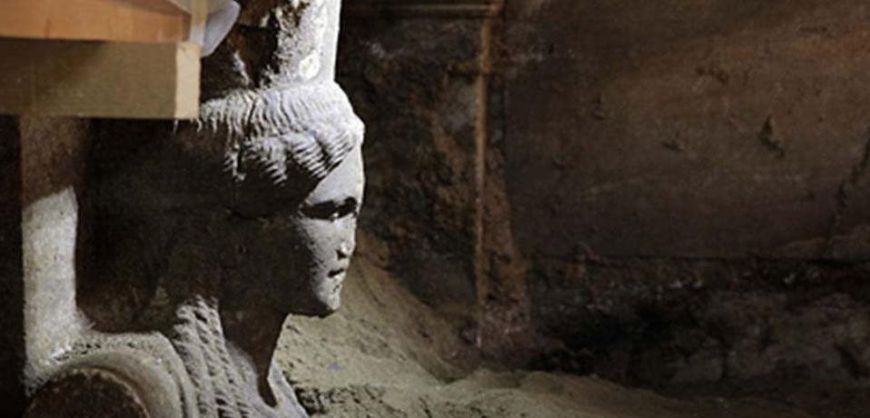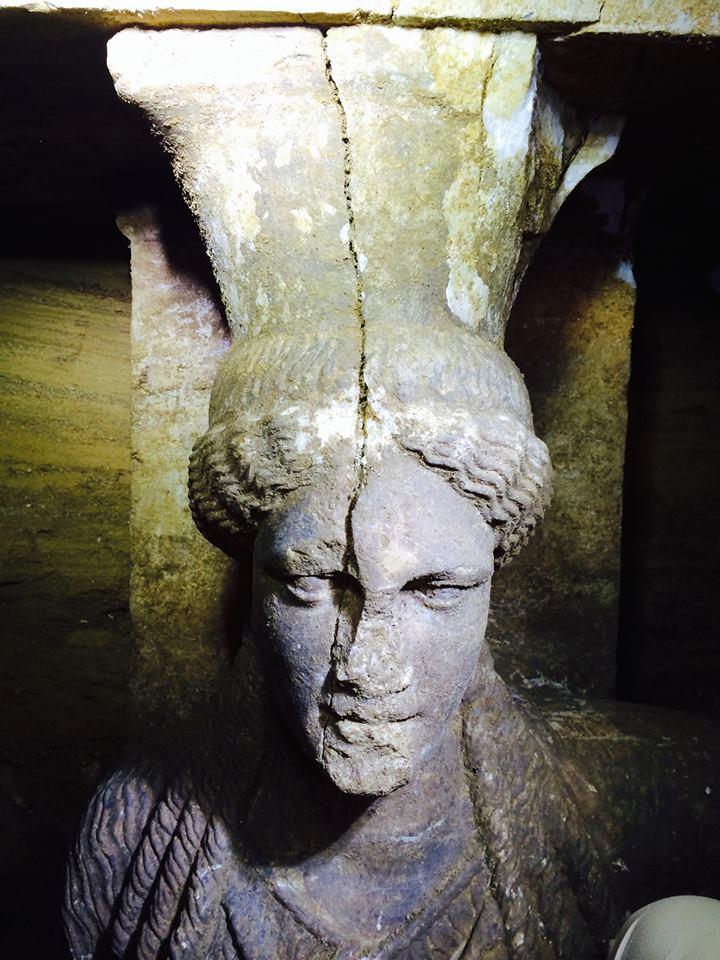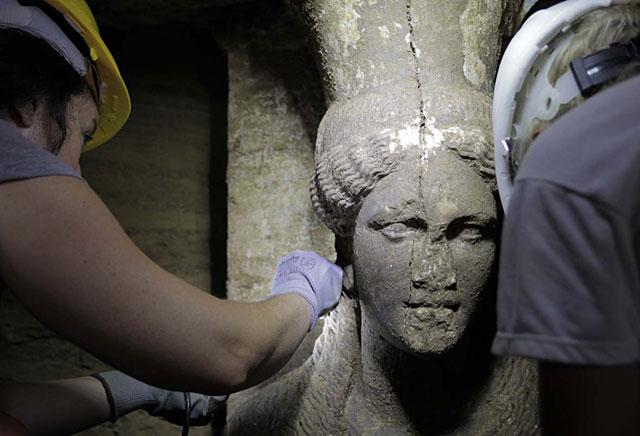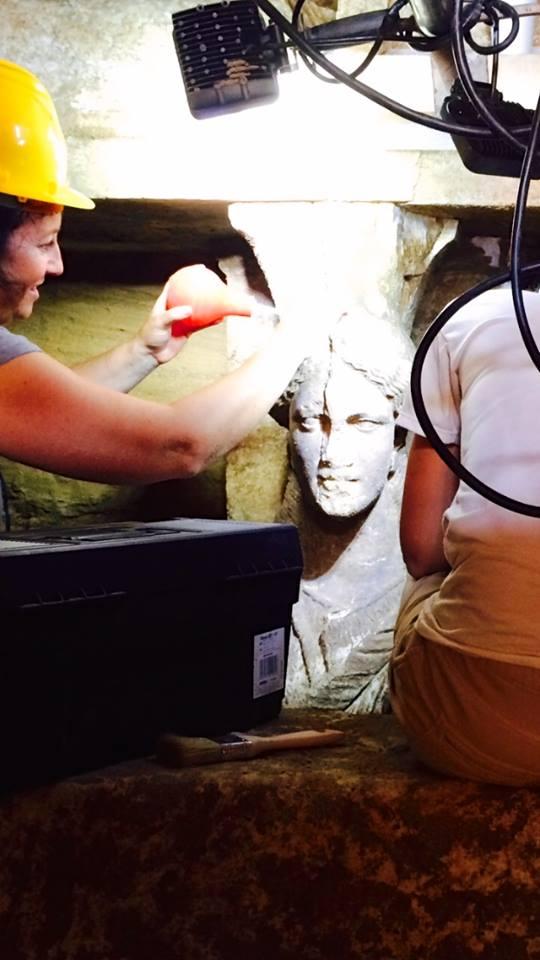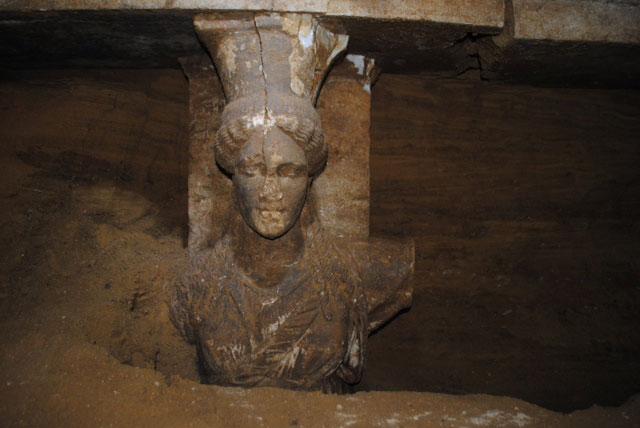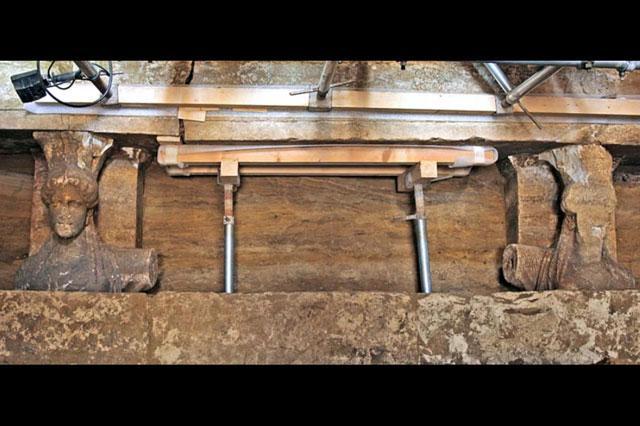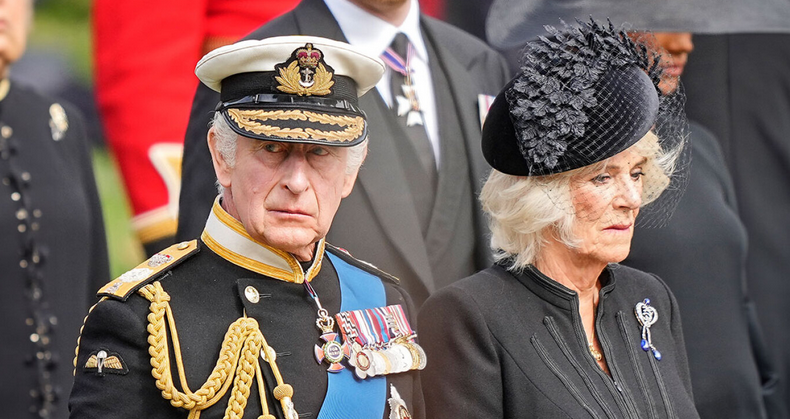There is dissent among archaeologists regarding the arms of the caryatid statues in the ancient tomb of Amphipolis following the Ministry of Culture’s press release stating that the statues in front of the third diaphragmatic wall had “outstretched” hands. An archaeologist speaking with Proto Thema said that the release was false in its description as can be seen by architect Michalis Lefantzis diagram of the tomb.
Archaeologists who disagree that the hands are “outstretched”, possibly to forbid grave robbers, state that the hands were “extended” instead. The stance of the caryatids and slightly lifted shoulders indicates that they may have been standing sideways with their hands “extended” to the side. They may either had been supporting the ceiling or, as in other tomb motifs, been holding each other as a way of blocking the entrance.
The day the caryatids came to light:

